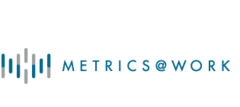Drivers of engagement
Employee engagement can be physical, emotional, and/or cognitive.
- Physical engagement is based on the amount of exertion an employee puts into their job. Physically engaged employees view work as a source of energy.
- Emotionally engaged employees have a positive job outlook and are passionate about their work.
- Cognitively engaged employees devote more attention to their work and are absorbed in their job.
Whatever the source, engaged employees feel connected to their work because they can relate to, and are committed to, and they also see how they contribute to the overall success and mission of the university.
As the world of work changes around us, research continues to show that creating a psychologically safe work culture that promotes inclusion and well-being are key to employee engagement. Drivers of belonging and connection are important for all employees regardless of their work location (e.g., onsite, hybrid or remote).
Although there are many researched drivers of engagement, here are a few that teams can focus on to have a strong impact!
Inclusion Towards inclusive excellence brochure
Encourage everyone to speak up, be heard and feel welcome.
- Foster an environment where every team member feels free to share ideas. Adopt strategies to support psychological safety.
- Acknowledge the differences of experience on your team and build on that
- Guard against availability bias – recognizing or creating opportunities for team members with whom you interact most frequently.
- Give everyone a sense of purpose by explaining how they contribute to the department’s/faculty’s success
Communication Article: Do employees really know what's expected of them?
Ensure employees have a clear sense of what is expected of them. Set clear expectations for communication and information sharing within the team.
- Have regular one-on-one conversations to discuss work expectations and priorities (see additional tips in section below)
- Utilize tools to track program and facilitate collaboration
- Create or update team norms, practises and protocols
Recognition Recognition toolkit for McMaster leaders
Promote recognition to motivate employees and provide a sense of accomplishment and value.
- Recognition doesn’t have to be grandiose or expensive
- Methods of recognition are not one-size-fits-all
- During transition, celebrate small wins!
Wellness Prioritizing optimal health & well-being at McMaster
Create and promote a culture of well-being.
- Provide well-being opportunities for employees (e.g., walking meetings, coffee chats, core break times)
- Ensure access to institutional employee well-being opportunities
- Model behaviour that promotes well-being and avoids “toxic productivity“
- Identify signs of burnout and implement ideas to mitigate
Connection Article: Tips for boosting employee engagement (via connection)
Humanize the workplace with meaningful connections and relationships. Pay attention to how you bring people together and build rapport across your team.
- Form project teams or working groups that include team members who don’t normally interact in their work to promote relationship building
- Host virtual events to create shared experiences and connect socially
- Connect team members for short coffee chats with other team members with whom they don’t typically engage
Employee Listening
Obtaining real-time employee feedback will give you a better understanding of what’s happening day-to-day, and supply you with information you need to improve employee engagement.
Here are five compelling reasons why obtaining employee feedback is important:
- Allows managers to uncover the unique needs and emotions of their teams.
- Show employees that leadership cares.
- Provides an easy way for managers to stay in tune with their teams.
- Identifies critical issues before they become problems.
- Fosters a culture of trust and feedback.
Read more about employee listening in this ThoughtExchange article :Listening to Employees: Getting it Right.

One-on-one conversations Tips and sample questions for one-on-one conversations
Connecting and checking in with employees is critical to keeping them engaged. Frequent and regular conversations will give you a better understanding of how employees are feeling, what obstacles stand in their way, and how you can help them be successful.

Engagement surveys About our survey provider
Surveys provide the opportunity to understand and identify employee concerns and interest through an anonymous feedback format. This enables employees to provide their insights to improve job satisfaction and the development of a healthy and “engaged” work environment. Employee engagement and pulse surveys are currently completed in several departments and faculties across McMaster.
Want to learn more? Contact us! See our contact information below.
Survey Resources
Employee Engagement Ambassador Role Description
Information about the Employee Engagement Ambassador Role
Employee Engagement Leader Role Description
Information about the Employee Engagement Leader Role within the Administration Division
Employee Engagement Ambassador Listing – Administration Division
Contact information for Administration Division Employee Engagement Ambassadors
Employee Engagement Ambassador Orientation Presentation
Employee Engagement Ambassador Orientation Presentation - October 2018 - Administration Division
Contact Us
Please contact us if you are interested in completing an engagement survey within your department or team or if you would like more information on how to create an engaged and inclusive workplace.

Melanie Garaffa
Associate Director, Talent, Equity and Development, Organizational Development

